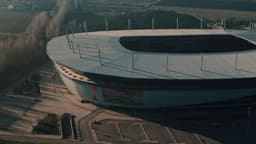Strategic Adjustments Amidst Challenges: Real Betis' Tactical Evolution
Real Betis Seville is navigating a challenging phase, with key players sidelined due to injuries and suspensions, necessitating tactical adjustments by manager Manuel Pellegrini. The absences of Giovani Lo Celso and Marc Roca have forced Betis to rethink their midfield dynamics, impacting both their possession strategy and transitional play.
Real Betis typically operates in a 4-2-3-1 formation, leveraging the dual pivot to maintain balance between offensive thrusts and defensive solidity. However, with Lo Celso and Roca unavailable, Pellegrini has had to adapt, possibly shifting towards a 4-3-3 formation to ensure midfield stability. This change allows for a more fluid attacking transition, where the midfield three can rotate roles, providing cover and support as needed.
The anticipated return of Giovani Lo Celso, a player known for his creative vision and incisive passing, could reinvigorate Betis' attacking phase. Lo Celso's ability to exploit half-spaces and deliver key passes is crucial in breaking down compact defensive units, a quality that Betis sorely misses. Until his return, however, Pellegrini might rely on Nabil Fekir to shoulder the creative responsibilities, utilizing his dribbling prowess and ability to link play between the lines.
With Marc Roca's potential return by the end of March, Betis' defensive transitions are expected to improve significantly. Roca's positional awareness and tackling ability are vital in shielding the defensive line and breaking up opposition counter-attacks. In his absence, Betis may deploy a more conservative approach, with a deeper defensive line to mitigate the lack of a natural ball-winner in midfield.
The suspension of Johnny Cardoso further complicates these tactical considerations. Cardoso's role as a dynamic midfielder who can press high and recover possession is integral to Betis' high-pressing strategy. Without him, Pellegrini might opt for a more controlled pressing approach, focusing on maintaining shape and exploiting pressing triggers rather than relentless pursuit of the ball.
In light of Borna Barisic's unfortunate long-term injury, Betis must also reassess their defensive depth. Barisic's absence may lead to a reliance on younger or less experienced defenders, which could impact Betis' defensive organization and set-piece strategies. Pellegrini may prioritize defensive drills in training sessions to ensure cohesion and preparedness among the backline.
Overall, Real Betis' current predicament necessitates strategic flexibility and tactical ingenuity. Pellegrini's ability to adapt his team's formation and playing style in response to these challenges will be crucial in maintaining their competitive edge in La Liga. As the team awaits the return of key players, the emphasis will be on collective resilience and adaptability to navigate this period successfully.







